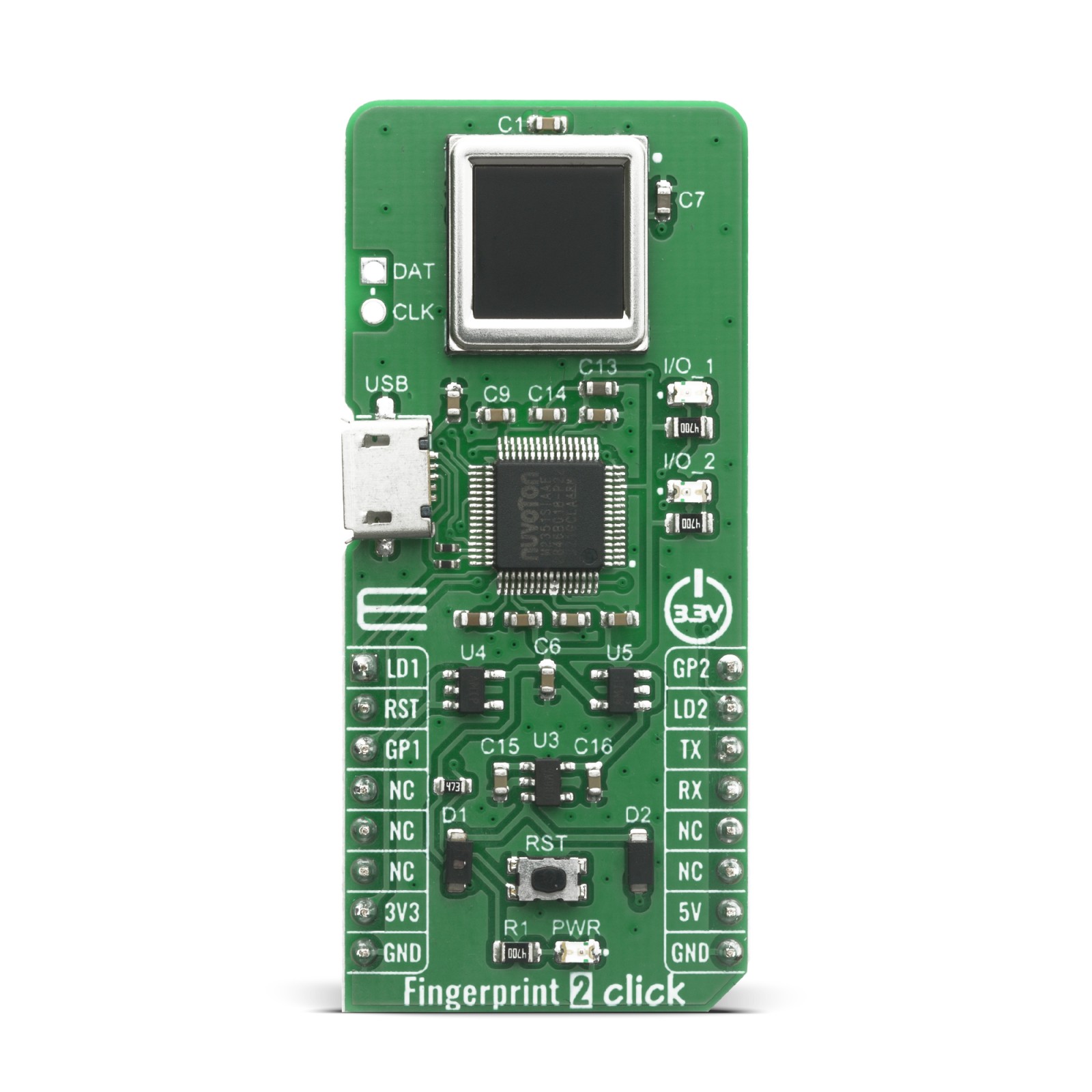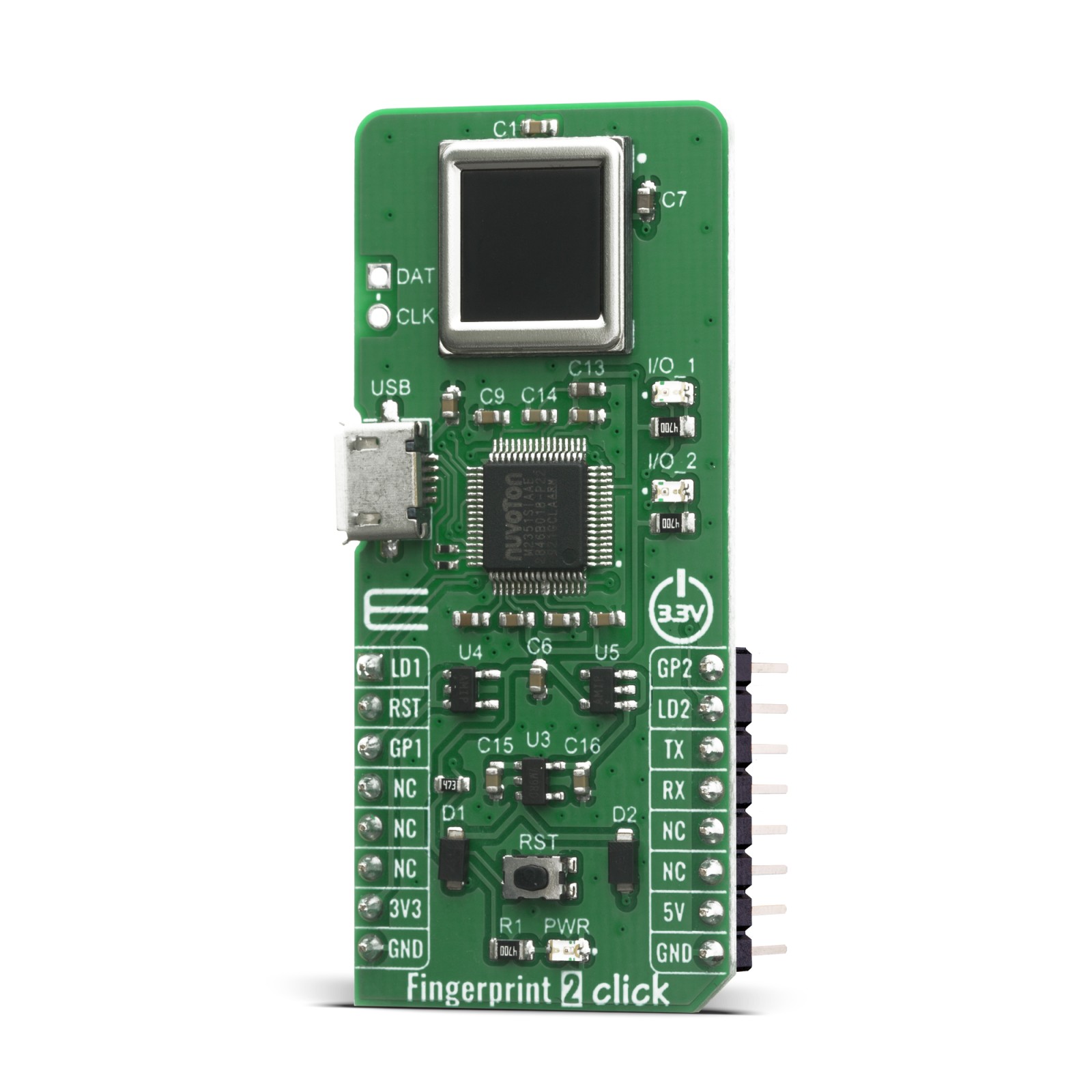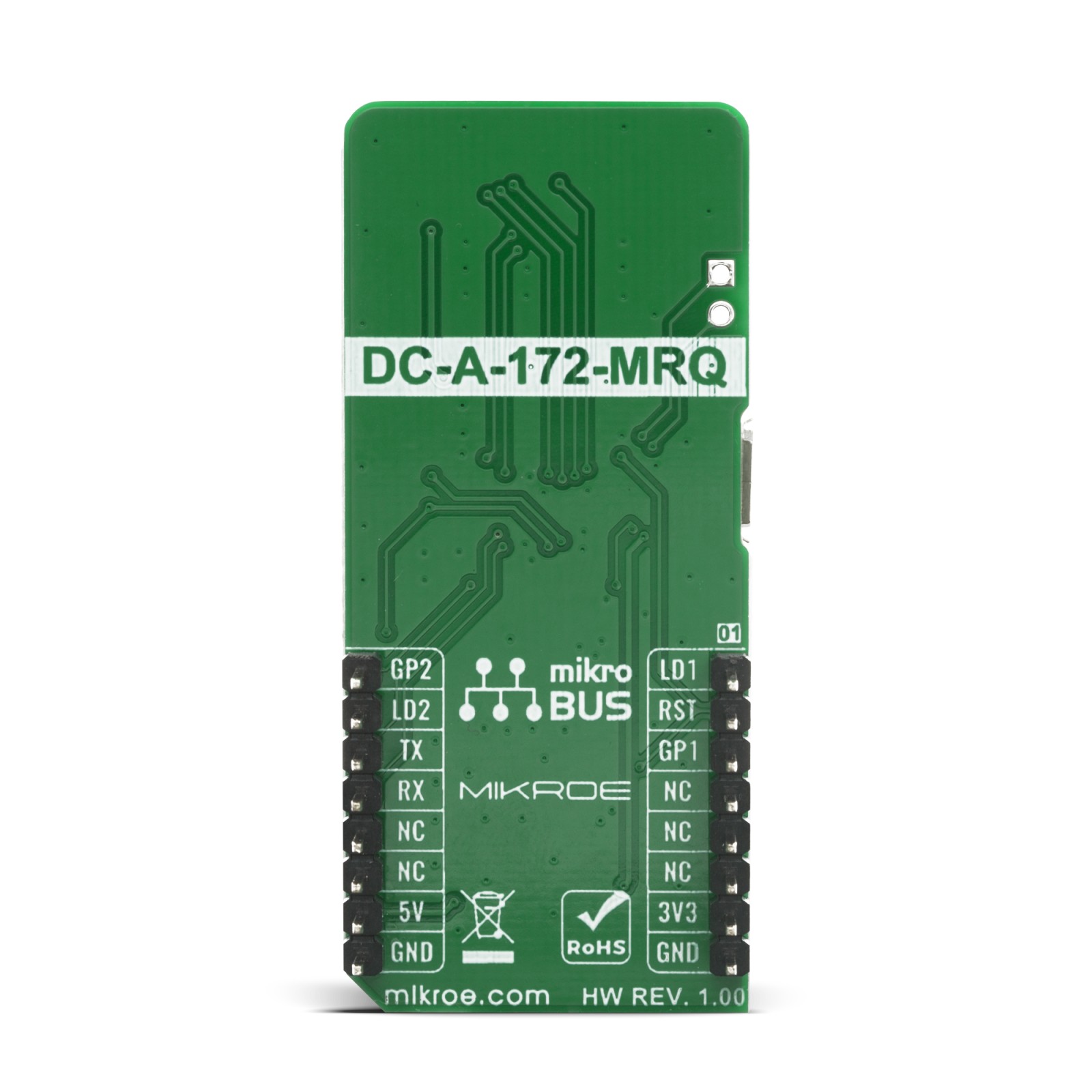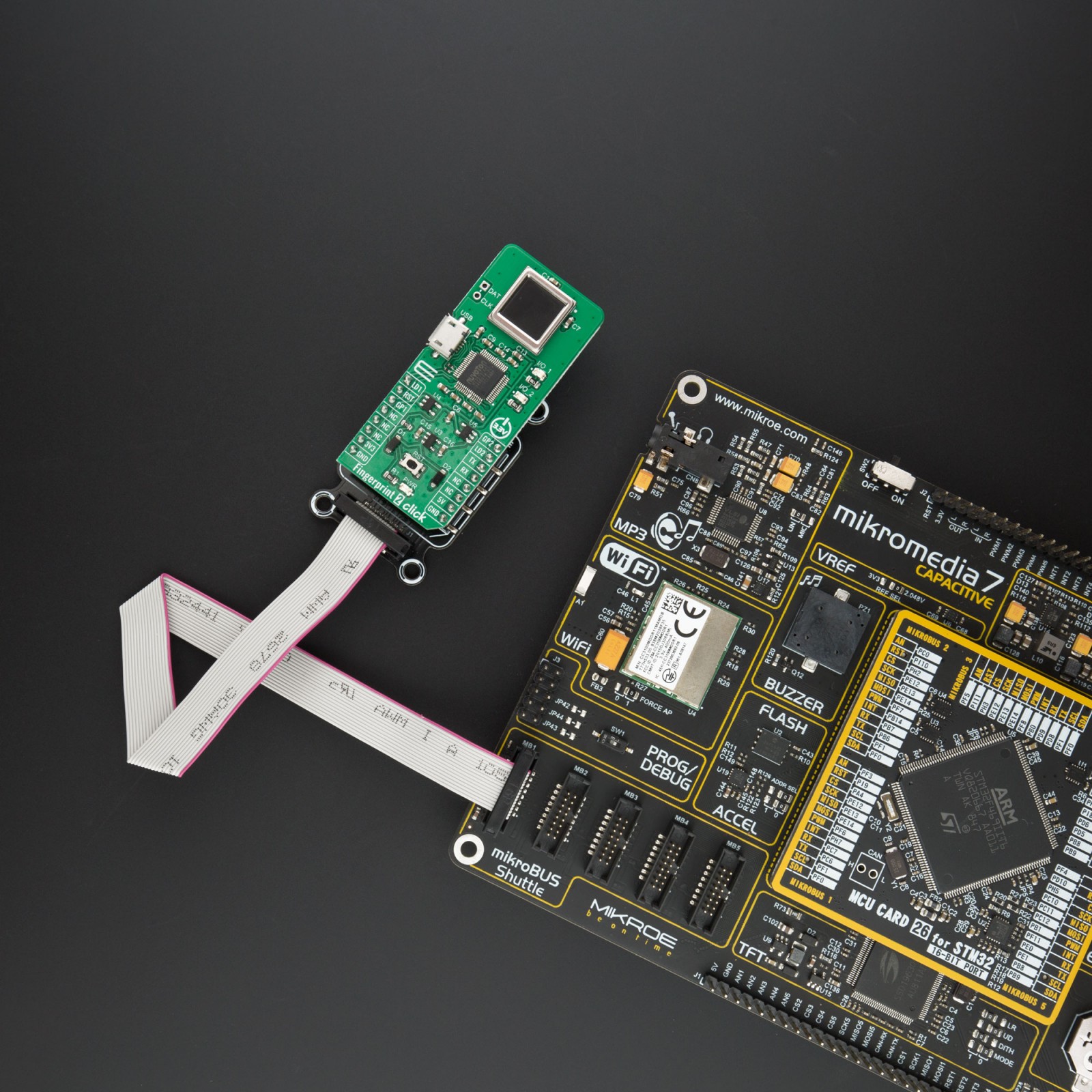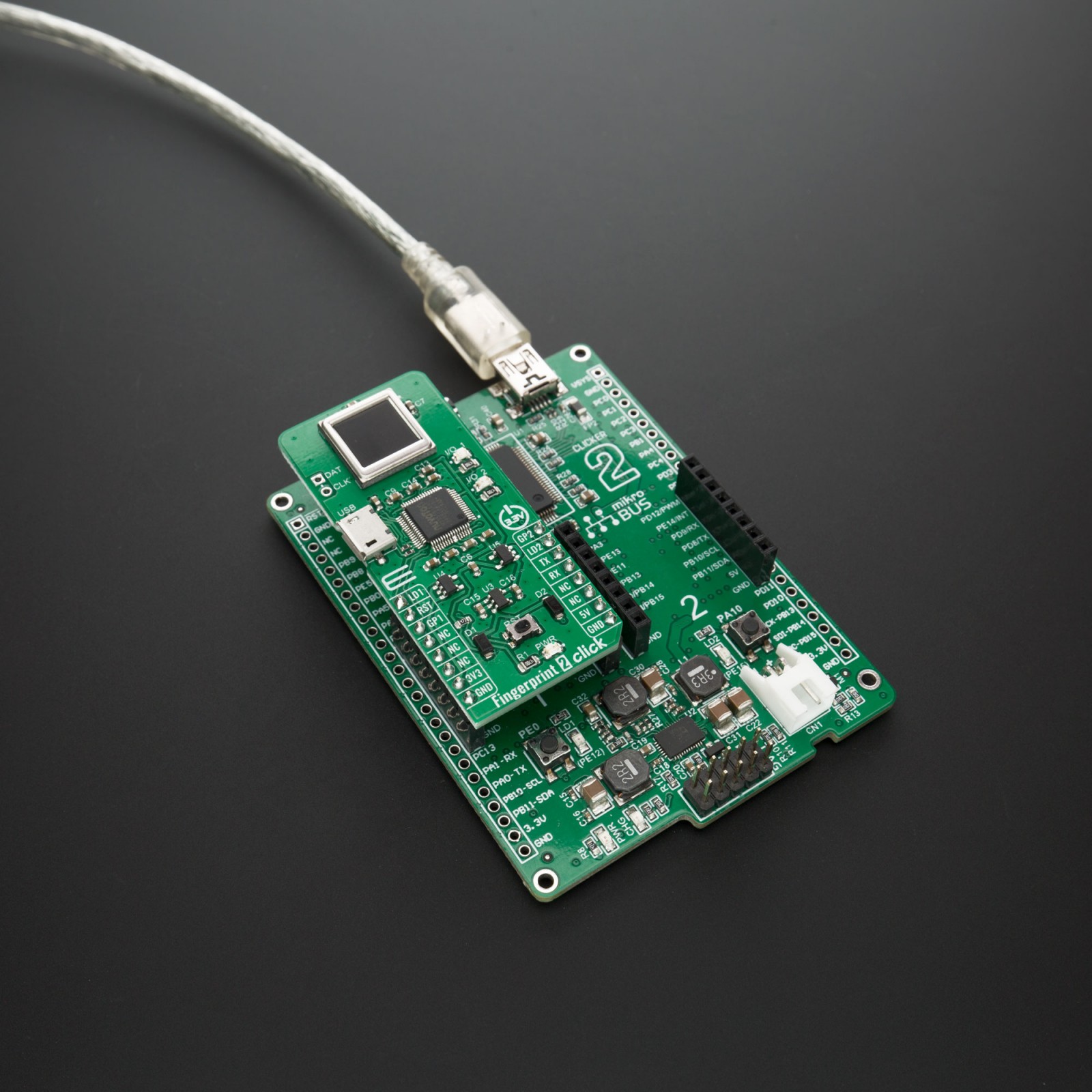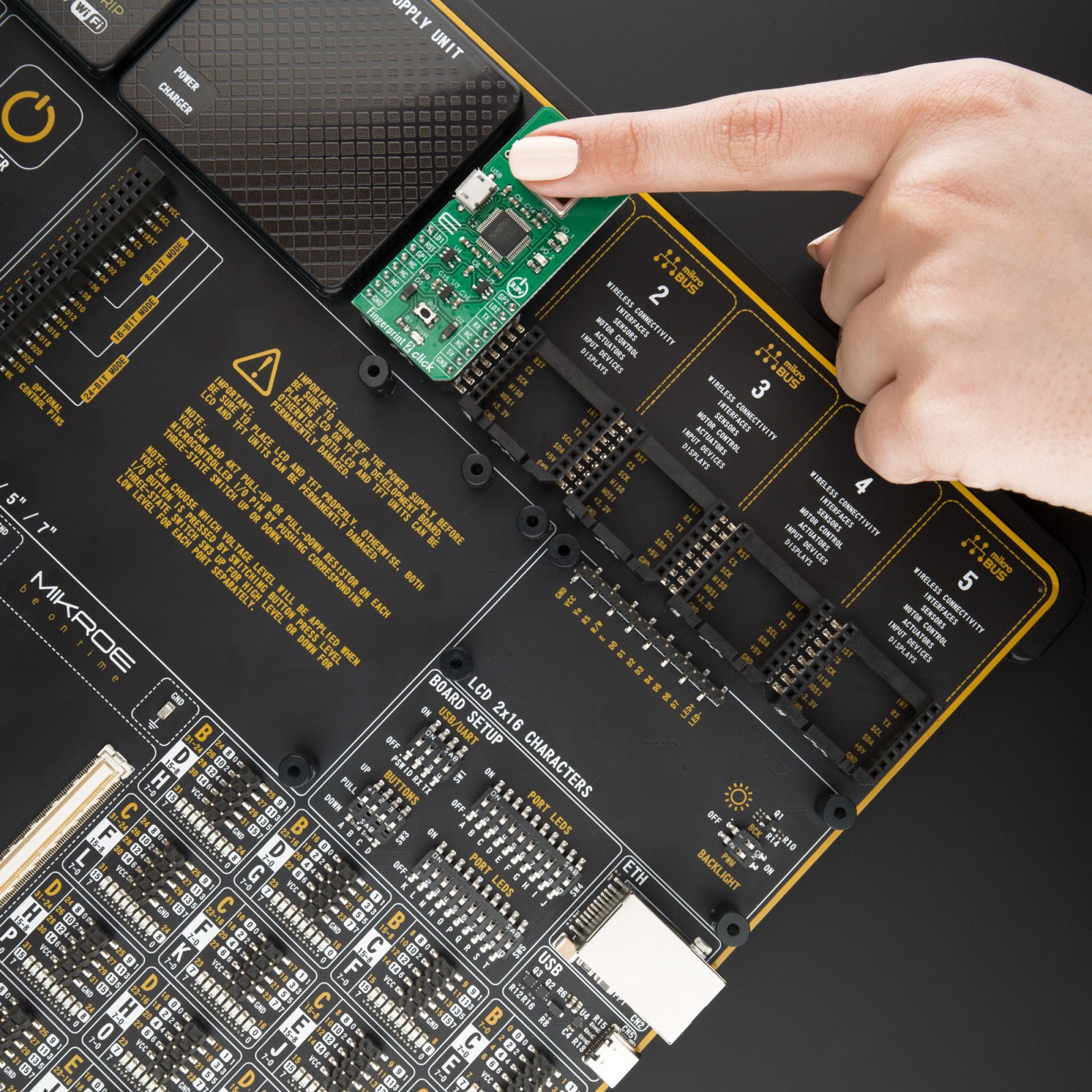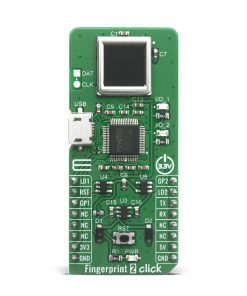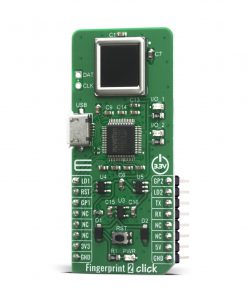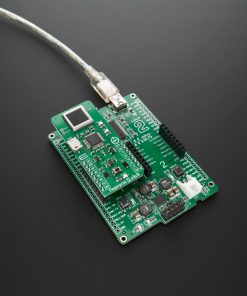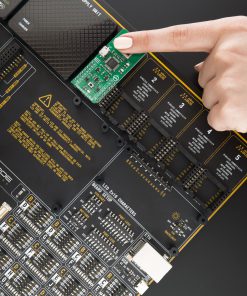Fingerprint 2 Click
R1,150.00 ex. VAT
Fingerprint 2 Click is a new fingerprint scanner Click board simplified for everyone’s use and it’s very easy to implement! This add-on board consists of a high-speed Nuvoton processor which carries high-performance fingerprint algorithm developed for on-board A-172-MRQ fingerprint sensor from company ByNew Technology Inc. This board can be used as a standalone device when connected over USB to PC or it can be controlled by the MCU/processor over serial UART interface. Board is already coming with preprogrammed firmware capable of storing up to 24 different fingerprints at the same time, as well as recognition algorithm for fingerprint comparison. This board enables you that in the easiest and fastest way integrate biometric security into your design.
Fingerprint 2 Click is supported by a mikroSDK compliant library, which includes functions that simplify software development. This Click board™ comes as a fully tested product, ready to be used on a system equipped with the mikroBUS™ socket.
Stock: Lead-time applicable.
| 5+ | R1,092.50 |
| 10+ | R1,035.00 |
| 15+ | R977.50 |
| 20+ | R940.70 |

